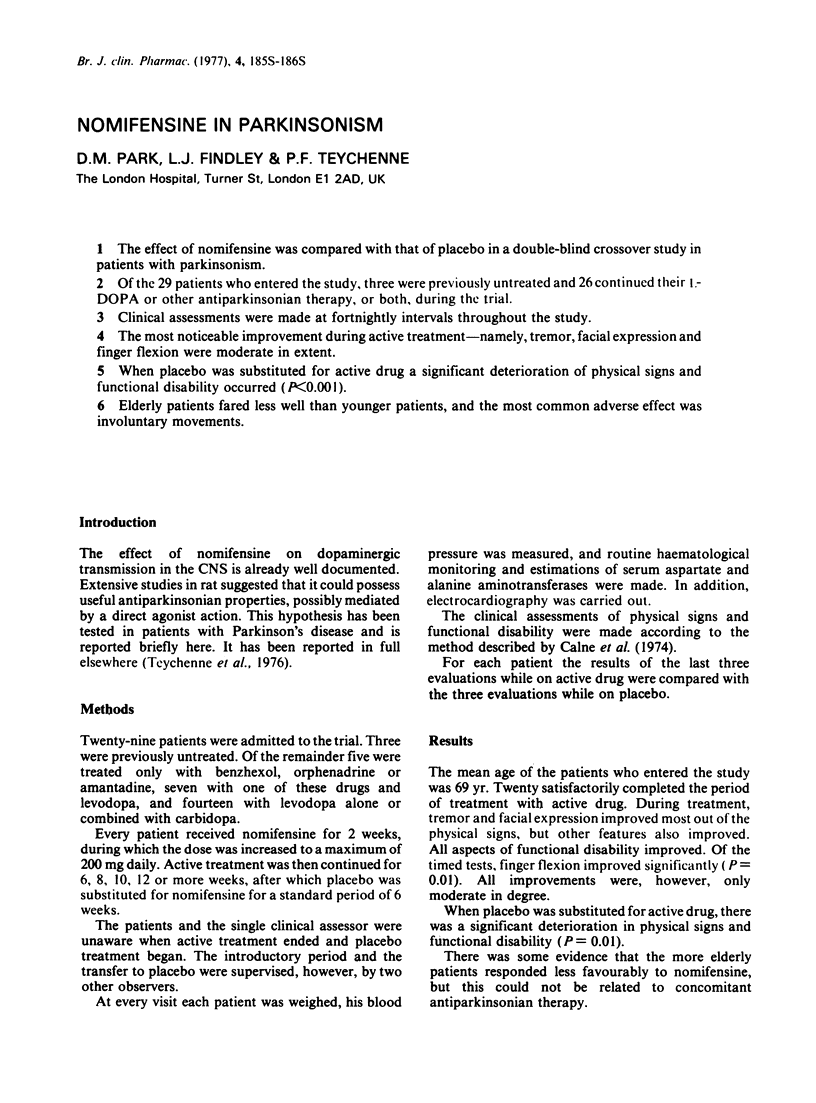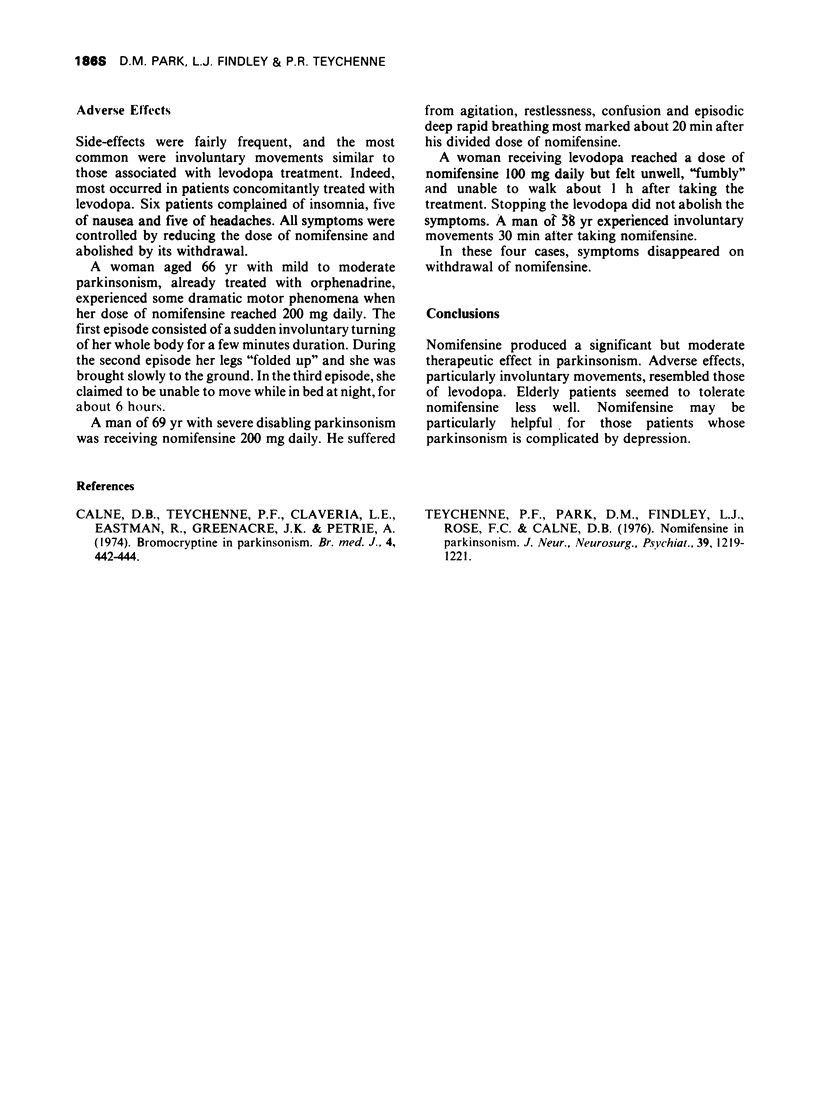Abstract
1 The effect of nomifensine was compared with that of placebo in a double-blind crossover study in patients with parkinsonism.
2 Of the 29 patients who entered the study, three were previously untreated and 26 continued their 1-DOPA or other antiparkinsonian therapy, or both, during the trial.
3 Clinical assessments were made at fortnightly intervals throughout the study.
4 The most noticeable improvement during active treatment—namely, tremor, facial expression and finger flexion were moderate in extent.
5 When placebo was substituted for active drug a significant deterioration of physical signs and functional disability occurred (P<0.001).
6 Elderly patients fared less well than younger patients, and the most common adverse effect was involuntary movements.
Full text
PDF

Selected References
These references are in PubMed. This may not be the complete list of references from this article.
- Calne D. B., Teychenne P. F., Claveria L. E., Eastman R., Greenacre J. K., Petrie A. Bromocriptine in Parkinsonism. Br Med J. 1974 Nov 23;4(5942):442–444. doi: 10.1136/bmj.4.5942.442. [DOI] [PMC free article] [PubMed] [Google Scholar]
- Teychenne P. F., Park D. M., Findley L. J., Rose F. C., Calne D. B. Nomifensine in parkinsonism. J Neurol Neurosurg Psychiatry. 1976 Dec;39(12):1219–1221. doi: 10.1136/jnnp.39.12.1219. [DOI] [PMC free article] [PubMed] [Google Scholar]


